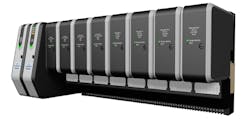A critical stage in the transition from fossil fuels to those that will add little to no carbon to the planet’s atmosphere is the development of the processes and control systems needed to reliably produce and store renewable fuels. Manufacturers, automation and control suppliers and governments around the world are working to advance these efforts.
One example of this effort is taking place at Toyota Australia’s Altona, Victoria site. Part of the site has been transformed into a demonstration-scale hydrogen production, storage and refueling plant incorporating renewable power generation methods.
This project is designed to demonstrate the technical and economic feasibility of sustainably producing, storing and delivering hydrogen gas using renewable energy. The plant employs Emerson’s software-based process orchestration for improved connectivity and visibility. The software combines multiple data sources into one system that provides an automated reporting system and enables energy production monitoring via a web interface.
The challenge Emerson and Toyota needed to overcome was that the process of engineering connections between the systems ran the risk of building a complex, cumbersome infrastructure that would increase costs while potentially delaying the project or impeding efficient maintenance during the plant’s lifecycle.
Much of the data collected will also be used to demonstrate compliance to the Australian Renewable Energy Agency (ARENA), which requires specific levels of sustainability performance in areas such as green energy use. ARENA provided approximately 40% of the Toyota project’s funding.
Technologies deployed
Toyota used Emerson’s DeltaV software and automation technologies to integrate the various third-party systems needed to run the hydrogen system efficiently and effectively. These technologies included the DeltaV distributed control system (DCS) and safety instrumented system (SIS) to control system operations such as differentiating between deep and normal cycle drawdown of the hydrogen storage vessels, ultimately helping to extend those systems’ lifespan.
The Emerson project team connected an array of third-party systems for this project using a variety of communications protocols. Working with the Toyota team, this multitude of protocols were converted to a common protocol—EtherNet/IP. Data carried by the protocol terminate on the DeltaV PK Controller to reduce communication complexity, lower project costs and shorten the amount of time needed to complete the project.
The project team also saved significant integration time and effort by using the DeltaV DCS and SIS with a PACSystems RX3i CPL410 edge controller to gather data from various third-party devices via a web-based API (application programming interface). This connection provides access to renewable energy data, system energy efficiency calculations and data from the site’s existing 500kW solar array. This web-based interface also saved Toyota the cost and time needed to purchase additional hardware



